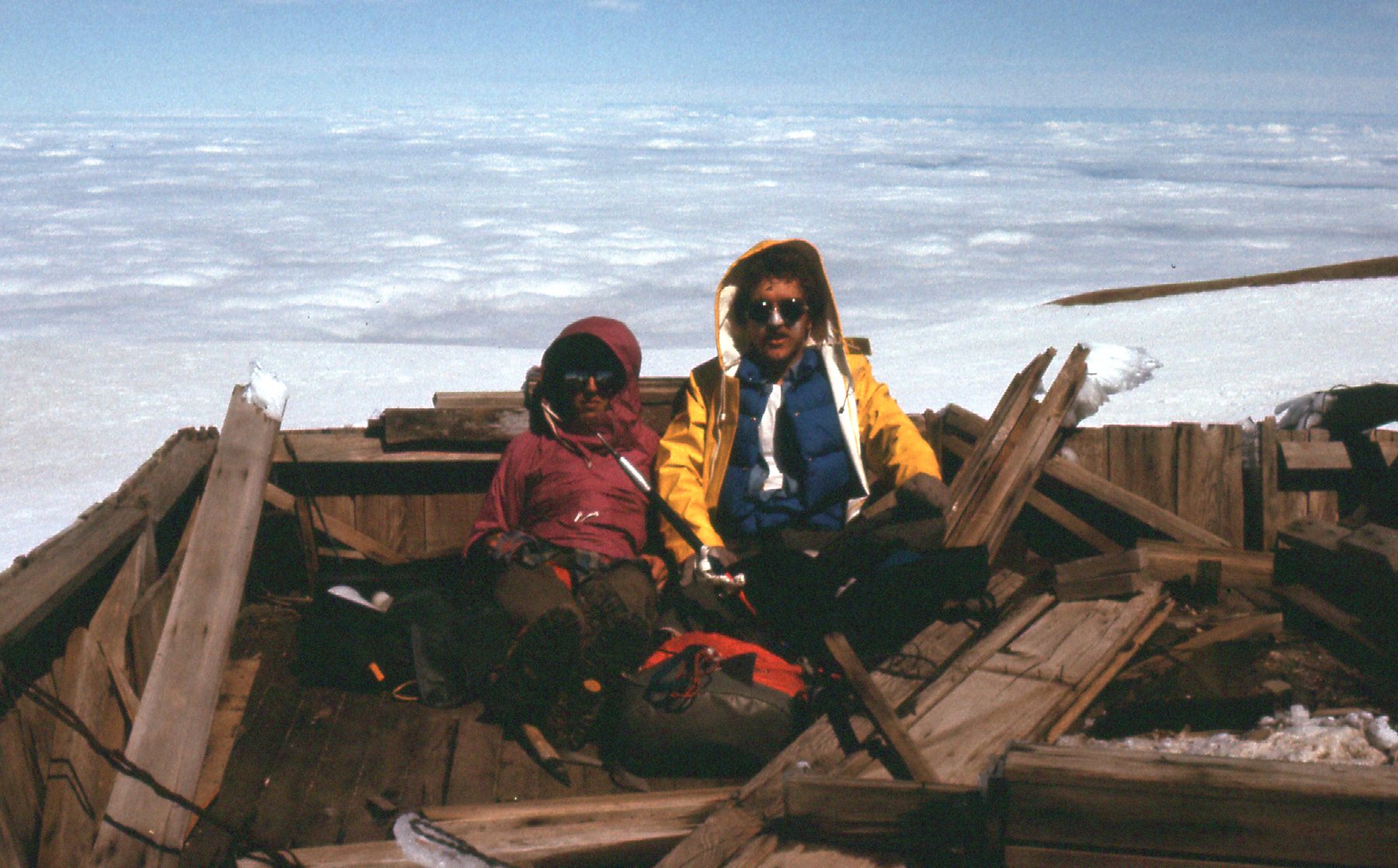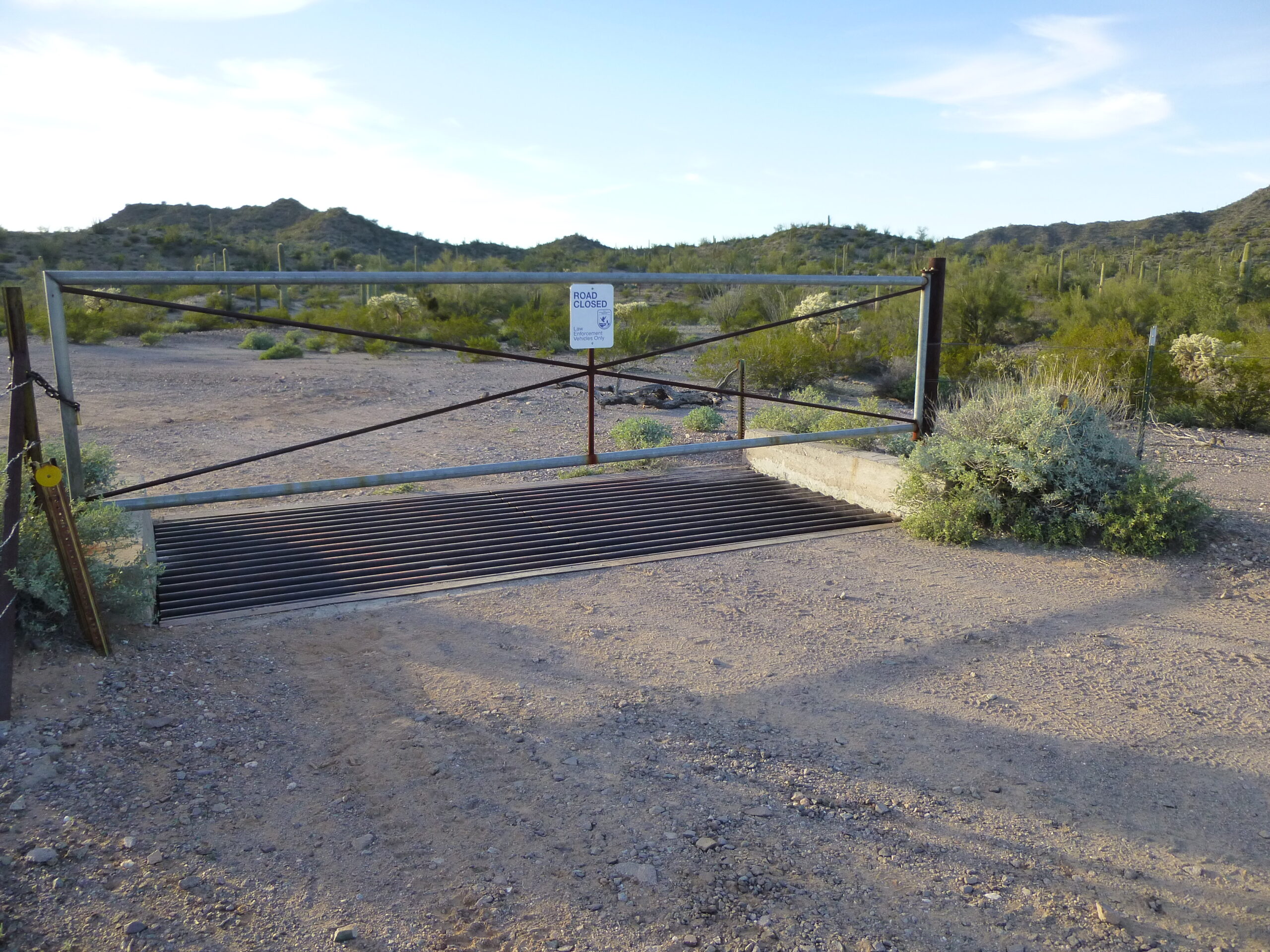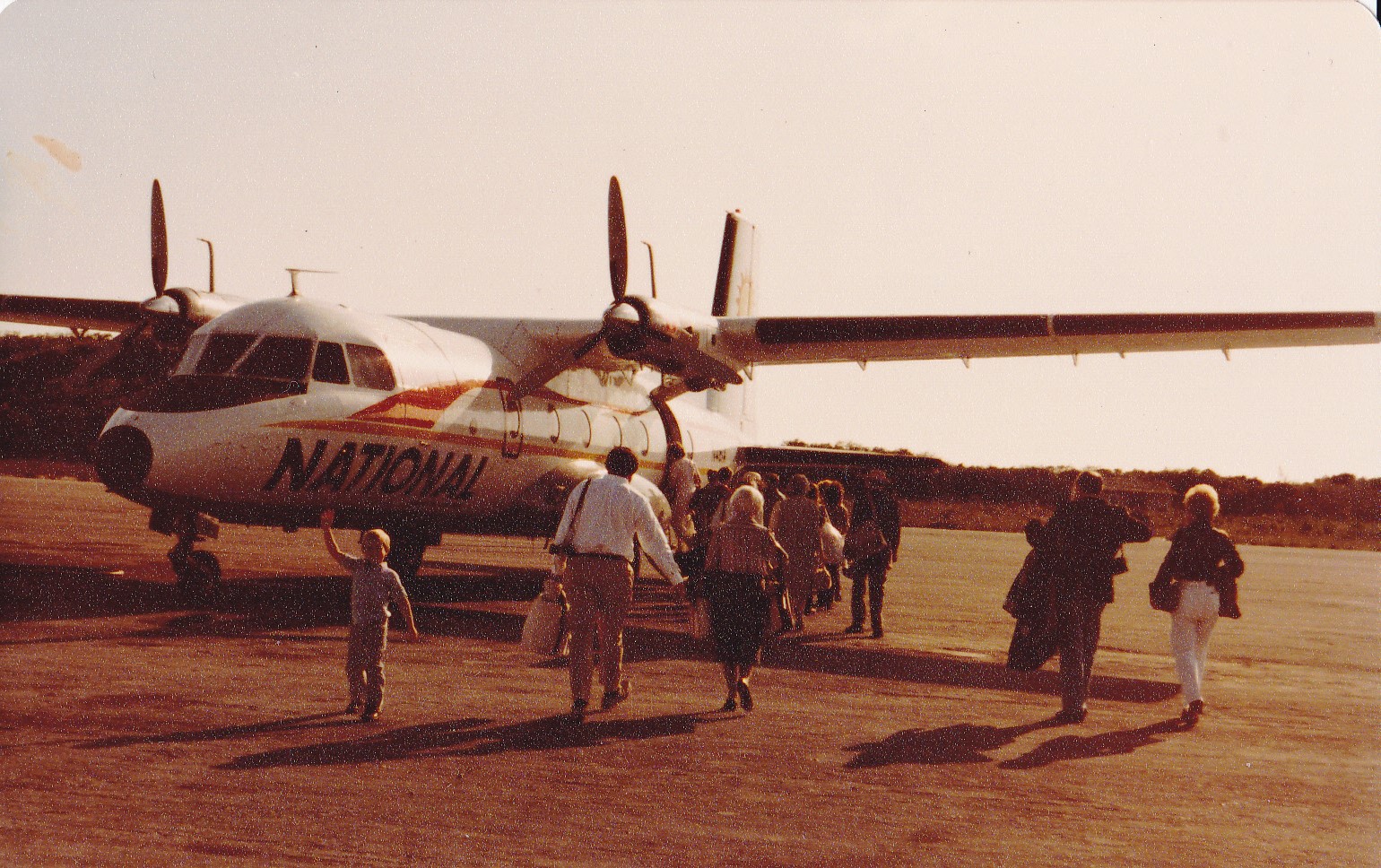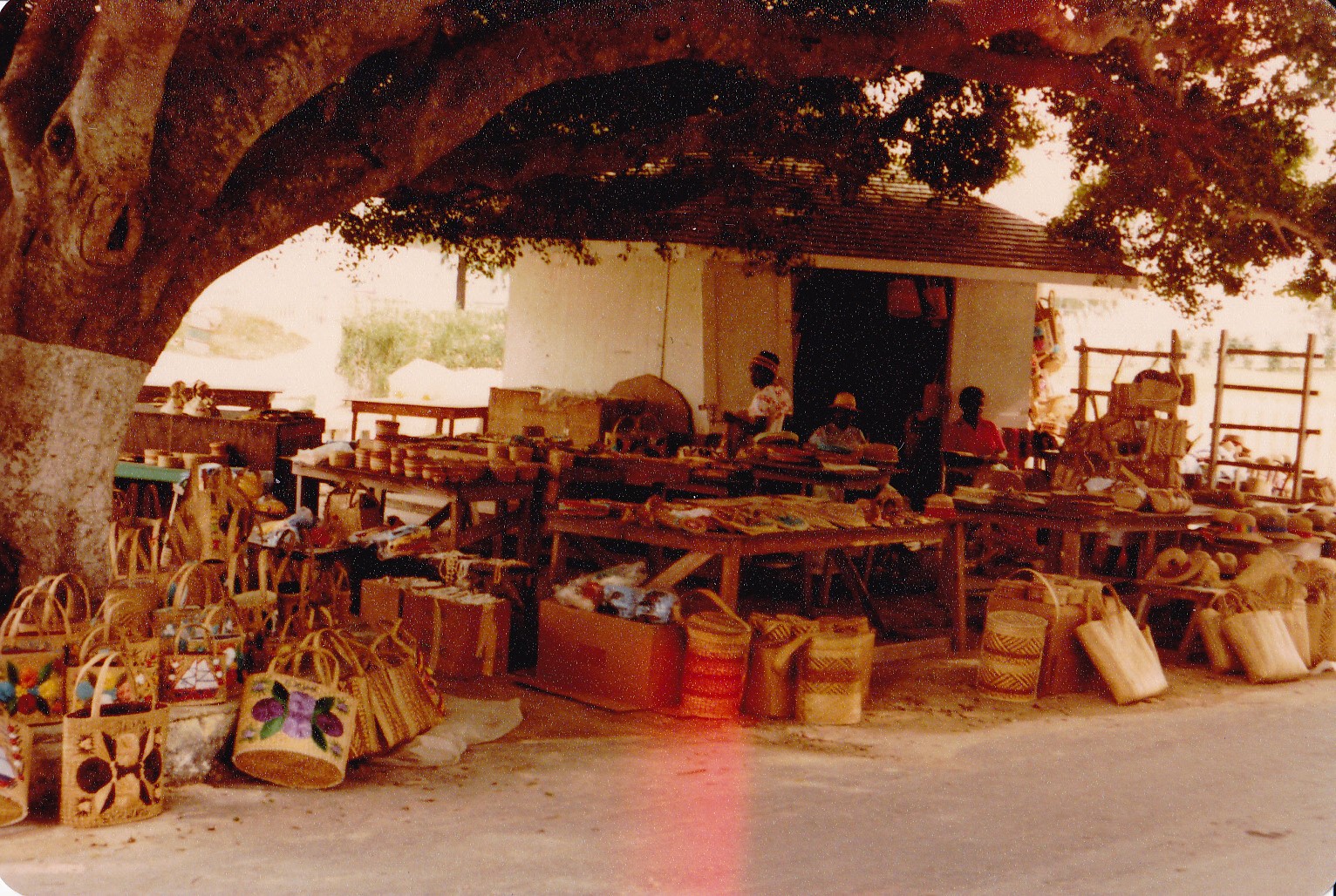Mason Jar
There have been songs written about drinking booze from a mason jar. Well, it happens, I’ve done it. Nigh on 20 years ago now, climber friend Dave and I were doing some climbing in a rather dicey area down way too close to the Mexican border in a remote part of the Sonoran desert. After having picked a remote spot hidden from Bad Guys in the area, we settled in to our campsite for the night. To take the edge off of things, I had brought along a 16-ounce Mason jar of Sauza Reposado. That, along with a shaker of salt, lime wedges and a nice campfire. helped us pass the evening in style. To top it all off, the next morning we climbed a thousand feet to the top of Bailey Peak via a nice Class 4 route on its east side.
Could’ve Been Easier
It was June 13th in the low desert, on about as hot a day as you could get. I was out climbing with my companion, an O’odham who lived on the reservation – being with him at least gave me a degree of legitimacy. It was a walk of less than a mile from my truck to reach the southwest ridge of the peak, but the 100-degree-plus mid-afternoon heat was palpable – you could actually taste it. When we reached the ridge, my partner declared he’d wait for me there in the shade, thank you very much – he’d already had enough of my lunacy for the day.
The ridge was quite broken in places, forcing me to negotiate several small cliffs up to low-5th. It was the 1980s, and although 2 others had climbed the peak before me, I didn’t know that at the time. If I had, I would have sought them out to learn about the route they had chosen. In fact, every climber before me or since would choose a more sensible 4th-class route on the south side. Oh well, live and learn – I survived it. I tagged the summit, retraced my steps, retrieved my companion and we made the plod back to the truck and lived to climb another day.
A Long Night
Brian had just led us up a virgin no-name peak in a rugged part of the Sonoran desert. It was a great bit of skilled leading and route-finding, but then we had to get down off the thing. Following our 6 rappels, two of which almost got us killed while retrieving the stuck rope by loosening stuff up above which came hurtling down past us, we made it to a notch part-way down the mountain where it made sense to stop for the night. It was mid-November, the days were short, and we were running out of daylight.
Let me tell you about this notch. At an elevation of 6,000 feet, it was a tight spot between 2 very steep peaks. Boulders had fallen into the notch from above and filled it in a bit. I say a bit only because there wasn’t room to lie down – we didn’t have sleeping bags anyway. The best we could manage was to lay out the ropes and then sit on them back-to-back. There were holes all around us, and you could look through some of them right down the face we had yet to descend.
We managed to doze on and off, fitfully. After 14 hours, Brian looked at his watch and announced that dawn was approaching and that we should get ready to go. We were cramped, sore and tired. It took 7 more rappels to get off the face, some of them over bulges where I lost sight of Brian altogether as he rappelled ahead and planned our descent route, which was pretty much straight down. For much of it, I was scared shitless. Finally, 24 hours after leaving the summit, we made it back down off the face and back to our bivi site where all our gear awaited.
Mt. St. Helens Fire Lookout
Pretty much everyone in the United States has heard of Mt. St. Helens, in Washington state, mainly because of how it exploded in 1980. Way back in 1921, the U.S. Forest Service completed construction of a fire lookout on the summit, at an elevation of 9,677 feet. By 1929, it was abandoned. All that remained by the 1970s was the foundation. This picture shows the lookout back in its heyday.

In July of 1977, I climbed the mountain in the company of a couple of friends. We did in fact find the remnants of the lookout, as seen in these photos.
All traces of the lookout were removed permanently in 1980 when the mountain exploded and reduced it to the molecules from which it was made.
We Fooled the Border Patrol
The week between Christmas and New Year’s is the best time of the year to do your stealth climbing in off-limits mountains. There is little activity on the part of the military or other agencies like the Border Patrol due to the holidays, so that’s the time we picked to head into the Crater Range, an area totally forbidden to civilians. For our camp, we had picked a spot on the satellite photos that seemed well-hidden from prying eyes, down in a wash about 5 feet below the level of the surrounding desert.
We were using bicycles to get around on the military dirt roads. Whenever it came time to return to our camp, we would stop in the middle of the road, pick up our bikes and carry them off to the side of the road and a good hundred feet out into the desert. Then we’d go back to the road and erase our footprints where we’d carried the bikes. Our camp was 2,000 feet across the desert to the wash.
On our second day out, the BP followed our bicycle tracks along the main road to where we had climbed a peak. As we talked with them at the base of that peak, we asked them if they had discovered the location of our camp. It’s hard to fool those guys, as they are excellent trackers. They said they hadn’t, and we were both shocked and surprised, and also pleased. We didn’t tell them the location of our camp, which was several miles away. They didn’t care though – all that mattered to them was that we weren’t Bad Guys, and that was why they were out there, keeping us all safe from those scum.
Spelunkers, Sort Of
In 1966, I was working for the summer in a sawmill in the Canadian Rockies. One weekend, with 2 friends I went to the Rogers Pass area with the intention of sneaking into some caves that had been closed to the public for many years. On a whim, we stopped in at the park headquarters to chat with the staff – exactly why, I’m not sure. Maybe we asked them about the caves, knowing full well that they’d tell us that they were off-limits. What we didn’t tell them was that we had already entered the caves the previous summer, but poorly prepared. This time, in ’66, we had much better equipment and were ready to do some serious exploration. The park superintendent did tell us, though, that they knew of “a couple of idiots who had entered the caves the previous year with a roll of string and half a light between them“. We thought it was funny that they were of course referring to us. Naturally, we didn’t admit anything.
Darkness Came Quickly
It seems like a lifetime ago when Brian Rundle and I were climbing a big peak in Chile. We had descended almost all the way back down to our tent. Brian told me to go on ahead without him and he’d soon catch up. It was by then a straight shot to our camp so there was no risk of getting lost on the enormous mountainside. When I left Brian, it was broad daylight. I got to camp, but by the time Brian arrived, probably no more than 30 minutes later, it was pitch black.
If you’re close to the equator, the sun makes a path across the sky that cuts cleanly down toward the horizon at sunset in a nearly perpendicular fashion. Therefore, the sun and its rays disappear faster, giving equatorial regions a shorter twilight than higher latitudes.
Strange Bus
A trucker had dropped us off at the town of Patacamaya in Bolivia. All we had to do now was catch a bus to the capital. They came by regularly, but every time one stopped along the side of the road, it was mobbed by people pushing and shoving their way in and the few remaining seats were quickly taken before we even had a chance to board. Finally, after several tries, we forced our way on to one, paid about a dollar for the 2-hour bus ride, and tried to settle in. We had our huge mountaineering packs with us, which was awkward in the cramped bus. I managed to get a seat, but soon realized that a previous passenger had peed in it so I sat there in the wet seat for the duration of the trip. Not such a bargain price after all. After a while, I could look around a bit, and noticed that in the standing-room-only conditions, some distance farther back in the bus, a woman dressed in her colorful Bolivian clothing was lying down in the aisle and nursing her baby.
Unusual B.P. Request
It was 2014, and I was parked at the boundary of the Cabeza Prieta National Wildlife Refuge. A large metal gate blocked the road which headed west into the refuge, near the abandoned village of Chico Shunie. The use of the road was restricted to law enforcement and refuge officials. My plan was to head into the refuge early the next morning and travel many miles to climb a remote 1K peak, ignored until now by climbers. I was parked near the gate and prepared to camp for the night in my truck, when a Border Patrol vehicle pulled up. The two agents spent a while trying to unlock the gate so they could drive west into the refuge, but it seemed they didn’t have the right key for the lock. Frustrated, they finally asked me if I had a key for it. My answer went something like this: “Are you kidding me? If I had a key, I would have driven through that gate hours ago to get to my climbs, allowing me to cut 16 miles off of what was going to be a hellaciously-long day, even though the road is closed to the public. But I suppose if I had a key, maybe that would make me legit, right?” Well, they couldn’t put up much of an argument against that, but they still couldn’t unlock the gate, Finally, they gave up and left, obviously frustrated, because it meant an extra 40 miles of driving to get them to where they wanted to go.
Bahamian Holiday
As the end of 1983 approached, I was living through a particularly cold and snowy winter in southeastern Iowa. A friend suggested we fly away to someplace warm. She knew of a getaway, a place she had visited once before. We flew from Burlington, Iowa to snowy Chicago, then to Miami. Overnight in an airport hotel, then the next day a flight in a small plane to the island of Great Exuma in the Bahamas.
We landed at the airport near George Town, where a fellow awaited us. He drove us to our home for the next few days. It was lovely, right on the beach.
The place came complete with a cook, who would prepare for us literally anything we wanted. Also, we had a car and driver, and a nice motorboat operated by the same guy, which would take us anyplace we desired. We spent our day exploring deserted beaches accessed by our motorboat, visiting the market in George Town, and just plain relaxing. I remember one evening sitting in a bar in George Town – it was unusual in that small boats could pull right up to the bar so the crew could order drinks. As I recall, the price tag for all of this was $1,100.00 US for the few days we spent, which was split between 2 couples – air fare was extra. Not bad for such a pampered getaway.






